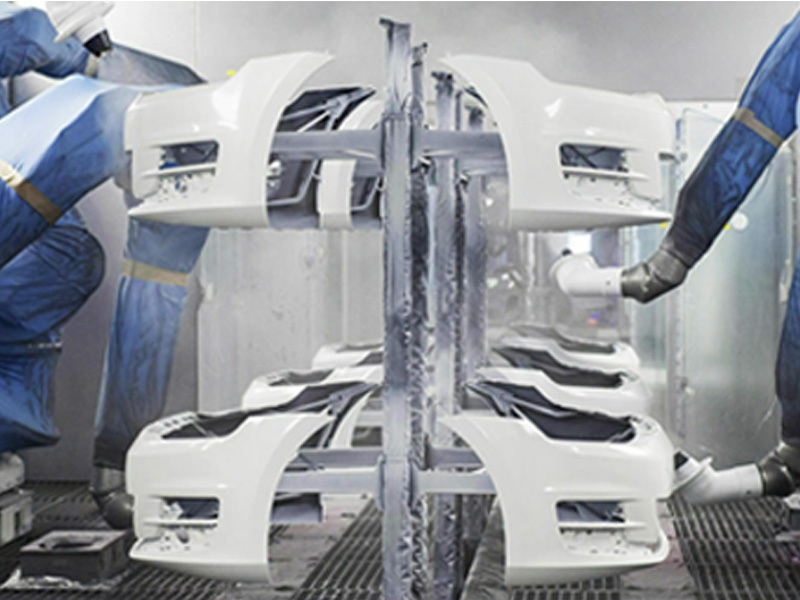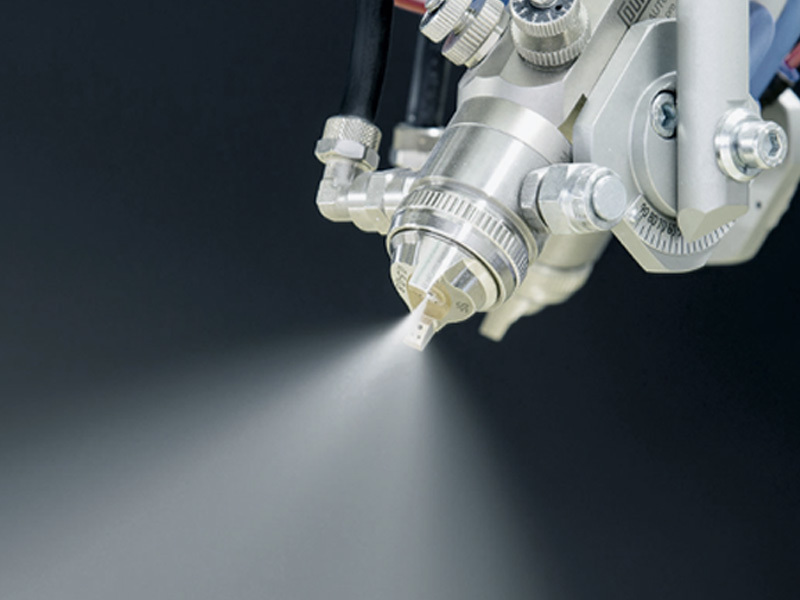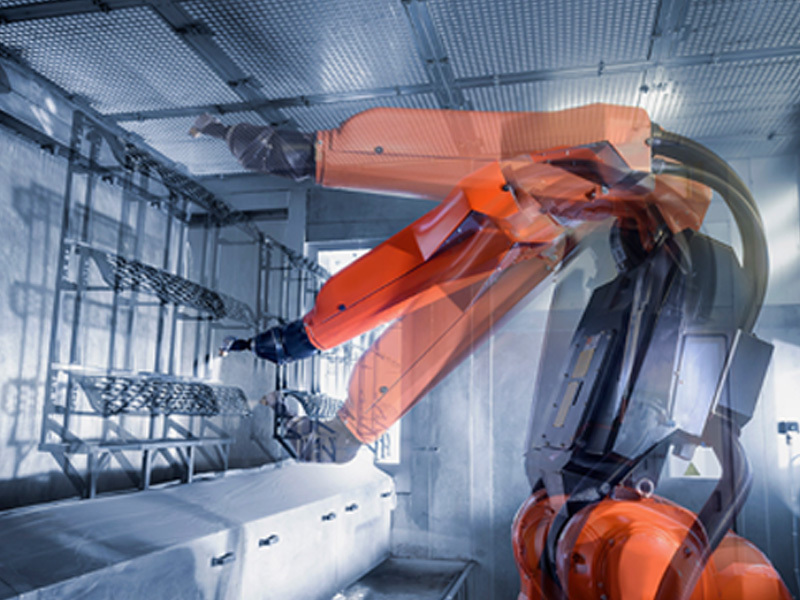Transform Your Painting Process with a Customized Robotic Arm: Revolutionizing Industrial Coatings
Release time:
2025-06-06
Transform Your Painting Process with a Customized Robotic Arm Introduction to Robotic Painting Technology In today’s fast-paced industrial environment, the demand for efficiency and precision in painting processes has never been higher. The introduction of **customized robotic arms** has revolutionized how industries approach painting tasks. These advanced machines are designed to handle diverse p

Transform Your Painting Process with a Customized Robotic Arm
Introduction to Robotic Painting Technology
In today’s fast-paced industrial environment, the demand for efficiency and precision in painting processes has never been higher. The introduction of **customized robotic arms** has revolutionized how industries approach painting tasks. These advanced machines are designed to handle diverse painting operations, from automotive to aerospace, enabling companies to achieve superior quality while significantly reducing operational costs.
Understanding the Benefits of Customized Robotic Arms
1. Enhanced Precision and Consistency
One of the primary advantages of using a customized robotic arm in your painting process is the **improved precision** it offers. Unlike human operators, robotic arms can execute complex movements with extreme accuracy, ensuring uniform paint application across various surfaces. This consistency not only enhances the visual appeal of the final product but also meets stringent industrial standards.
2. Increased Efficiency and Speed
Customized robotic arms can operate at a much faster pace than human workers. They can perform repetitive tasks without fatigue, leading to a significant increase in productivity. Businesses can complete projects in a fraction of the time it would take with manual painting techniques, thus meeting tighter deadlines and increasing throughput.
3. Enhanced Safety Standards
In an industrial setting, safety is paramount. Robotic painting systems can be programmed to handle hazardous materials, reducing the risk of injury to human workers. By automating the more dangerous aspects of the painting process, companies can create a safer work environment while adhering to health and safety regulations.
Applications of Customized Robotic Arms in Painting Processes
1. Automotive Industry
The automotive industry has embraced robotic painting technology to enhance the quality of vehicle finishes. Customized robotic arms are utilized to apply coatings uniformly, ensuring a flawless finish that meets industry standards. They can also be programmed to switch between different paint types seamlessly, adapting to various production needs.
2. Aerospace Manufacturing
In aerospace manufacturing, precision is critical. Customized robotic arms can apply coatings to intricate components, ensuring durability while meeting the specific requirements for weight and performance. These robotic systems can also operate in controlled environments, minimizing the risk of contamination.
3. Furniture and Home Appliances
The furniture industry is increasingly adopting robotic painting solutions to enhance production efficiency. Customized robotic arms can handle complex shapes and sizes, ensuring that every piece receives a consistent coat of paint. This technology not only speeds up the painting process but also reduces waste and improves finish quality.
Key Features of Customized Robotic Arms for Painting
1. Programmability and Flexibility
One of the standout features of customized robotic arms is their ability to be programmed for a variety of tasks. Manufacturers can tailor the robot’s movements to suit specific painting applications, allowing for quick adaptations to changing production demands.
2. Advanced Sensors and Vision Systems
Modern robotic arms are equipped with advanced sensors and vision systems that enable them to detect surface imperfections and adjust painting techniques accordingly. This level of sophistication ensures that every surface is treated optimally, resulting in superior finish quality.
3. Integration with Existing Systems
Customized robotic arms can seamlessly integrate with existing manufacturing processes. Whether you’re utilizing conveyor belts or other automated systems, these robots can work in harmony with your current operations, enhancing overall efficiency without requiring a complete overhaul of your setup.
Cost Considerations: Investing in Robotic Painting Technology
1. Initial Investment vs. Long-Term Savings
While the initial cost of implementing robotic painting systems can be significant, it’s essential to consider the long-term savings. The efficiency gains, reduction in labor costs, and decreased material waste can lead to substantial savings over time, making it a worthwhile investment.
2. Maintenance and Support
Regular maintenance is crucial for maximizing the lifespan and effectiveness of robotic arms. Investing in a reliable support system will ensure that any issues are promptly addressed, minimizing downtime and maintaining productivity.
Choosing the Right Robotic Arm for Your Painting Needs
1. Assessing Production Requirements
Before investing in a customized robotic arm, it’s crucial to assess your specific production needs. Consider factors such as the types of surfaces you’ll be painting, the volume of production, and any special requirements for the paint being used.
2. Working with Experienced Providers
Collaborating with a reputable provider who specializes in robotic painting solutions is essential. They can help you choose the right system tailored to your needs, ensuring that you get the most out of your investment.
FAQs about Customized Robotic Arms for Painting
1. What industries benefit from robotic painting systems?
Customized robotic arms are utilized in various industries, including automotive, aerospace, furniture manufacturing, and home appliances. Any sector requiring high-quality paint application can benefit from this technology.
2. How do robotic arms improve painting quality?
Robotic arms offer enhanced precision, consistency, and the ability to detect surface imperfections, leading to a superior finish compared to manual painting methods.
3. What is the average ROI for investing in robotic painting technology?
The ROI can vary widely based on industry and production scale. However, companies often see significant savings in labor costs and improved efficiency, leading to a favorable return on investment within a few years.
4. Are customized robotic arms difficult to operate?
While some training is necessary to operate and maintain robotic arms, many modern systems feature user-friendly interfaces and can be easily programmed to perform specific tasks.
5. How do robotic arms handle environmental considerations?
Robotic painting systems can be designed to minimize waste and ensure optimal paint usage, helping companies adhere to environmental regulations while maintaining high-quality standards.
Conclusion: Embracing the Future of Industrial Painting
The evolution of painting processes through the integration of customized robotic arms represents a significant leap forward for industries aiming to enhance quality, efficiency, and safety. By investing in this advanced technology, businesses position themselves for success in an increasingly competitive market. As we continue to explore innovations in **industrial equipment and components**, robotic arms stand out as a game changer, promising a future of streamlined operations and exceptional results. Embrace this transformation today and elevate your painting processes to new heights.











